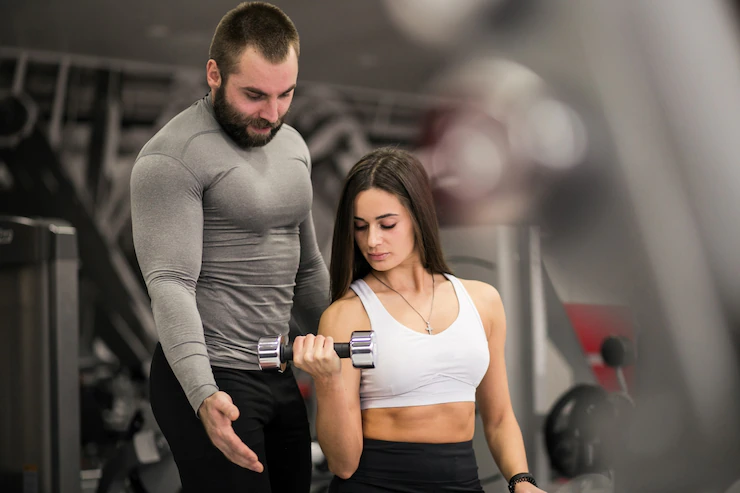Top 5 Fitness Tips for Adults With ADHD
Regular vigorous exercise is the most effective approach to expend energy and alleviate hyperactive symptoms associated with ADHD.
Hence, adult ADHD management requires adherence to a strict workout plan. Seeing results truly motivates someone with ADHD to stick to it. Adult ADHD management includes a commitment to a workout routine and monitoring, which may involve using technology, such as alarm clocks and organizers on hand-held computers or cell phones.
Physical fitness has a comparable effect on the brain and body, just like commonly prescribed ADHD medications. However, if you have ADHD, you know how challenging it may be to maintain a schedule, maintain focus, handle stress, and complete things that you begin. All of them have been taught to be vital components of an efficient training regimen.
Adults With ADHD: Top Fitness Tips
Here are the favorite fitness tips for individuals with ADHD that will undoubtedly be highly beneficial for their overall health.
1. Associating With A Fitness Trainer

Accountability is critical for a person with ADHD to function as an adult. By altering your mindset toward exercise and incorporating responsibility into your practice, you may overcome your difficulties and create a fitness routine that works for you.
Working out with a fitness trainer is one of the most effective strategies to establish accountability and maintain motivation over time. A fitness trainer is invested in your success and can assist you through good times and bad times.
Exercise does not have to be something you are forced to do. Rather, it should be something you truly enjoy! Whatever concerns or questions you have, approach your fitness experts, and they will help you out.
Additionally, a fitness trainer can create a customized exercise and diet plan for people with ADHD, which can include vitamins and supplements. If you want to save money on supplements without sacrificing your ADHD meds, say, Vyvanse. A Vyvanse discount card can help you financially to avoid triggering symptoms during a workout routine.
And if you require a new training program due to boredom with your current one, don’t be afraid to message your fitness trainer. Before you know it, you’ll have a new routine and will be one step closer to feeling fantastic!
2. Utilize Backup Plans
The ADHD brain despises structure yet thrives in it, which is especially true for tasks that you could consider to be a chore in your mind. Having a “backup workout” throughout the day will give you more flexibility in your workout schedule.
A backup schedule will provide you with two or three additional opportunities to make up for a lost time during the day. It’s like a second chance to get some exercise and feel terrific in an instant.
Begin by making a list of the three times during the day when you can exercise, for example, 6 A.M., 3 P.M., and 6 P.M. Start with the times that are most convenient for you. You’ll have three opportunities to work out during the day, and you’ll only have to show up for one of those times.
Another tip is to keep a supply of extra workouts on hand. Possibly you don’t have time to go for a jog today, or perhaps you don’t feel like going. However, you might be able to squeeze in an alternate workout. Rather than putting yourself in a position of dissatisfaction by following a rigid schedule, having backup plans will allow you to go with the flow.
3. Disregard The Inner Criticism
Do you have that voice telling in your head constantly reminding you that you’re not accomplishing enough? It’s all too easy to quit and listen to what the voice says. However, disregard that voice. Inform it to detach. It takes discipline to get rid of the belief that you must always be perfect. Bear in mind that you are growing daily. Each step counts, and anything is better than nothing!
This inner critic can result in procrastination, which means you’re likely to find an excuse not to exercise and another reason to vary your routines. Attempt to visualize your progress and maintain a positive view of all you do. A good mindset will undoubtedly aid you in achieving your fitness goals.
4. Track Your Fitness Activities
Hang a calendar on the wall and circle the days you had your exercise. Keep it simple, there’s no need to record workout time, laps, reps, heart rate, or anything else. Once a month, take a look back at your achievements to get a feel of how far you’ve come.
5. Get Into Working Out With A Friend

Adults with ADHD frequently fail to maintain an exercise routine because they attempt it alone. Hence, working out with a friend can boost your motivation and inspire you to stick to your commitment.
If you’re quickly bored regardless of the activity, having a workout buddy can help you stay motivated and consistent. Additionally, you’ll have someone with whom to discuss your objectives, difficulties, and achievements!
Contact a buddy who stays active regularly and ask if you can join them. You can also invite one who’s interested in working out. Knowing they are counting on you to show up will push you to maintain your schedule, and the mental stimulation will prevent you from becoming bored.
Final Thoughts
Certain individuals with ADHD who exercise alone without a guide or companion find it tedious, which becomes one of the most critical barriers to achieving their fitness objective. Choose an enjoyable or daring workout that you enjoy, and if you’re feeling lonely, invite a friend. Make an effort to do something different throughout each workout session to ensure productivity and fun.
Read Also:
- Adonis Belt – How to Get It? Best Workout Tips
- The 10 Best Pre Workout Supplements For 2020
- Best Healthy Methods You Should Use Post Workout
- How To Create The Perfect Workout Routine For You



